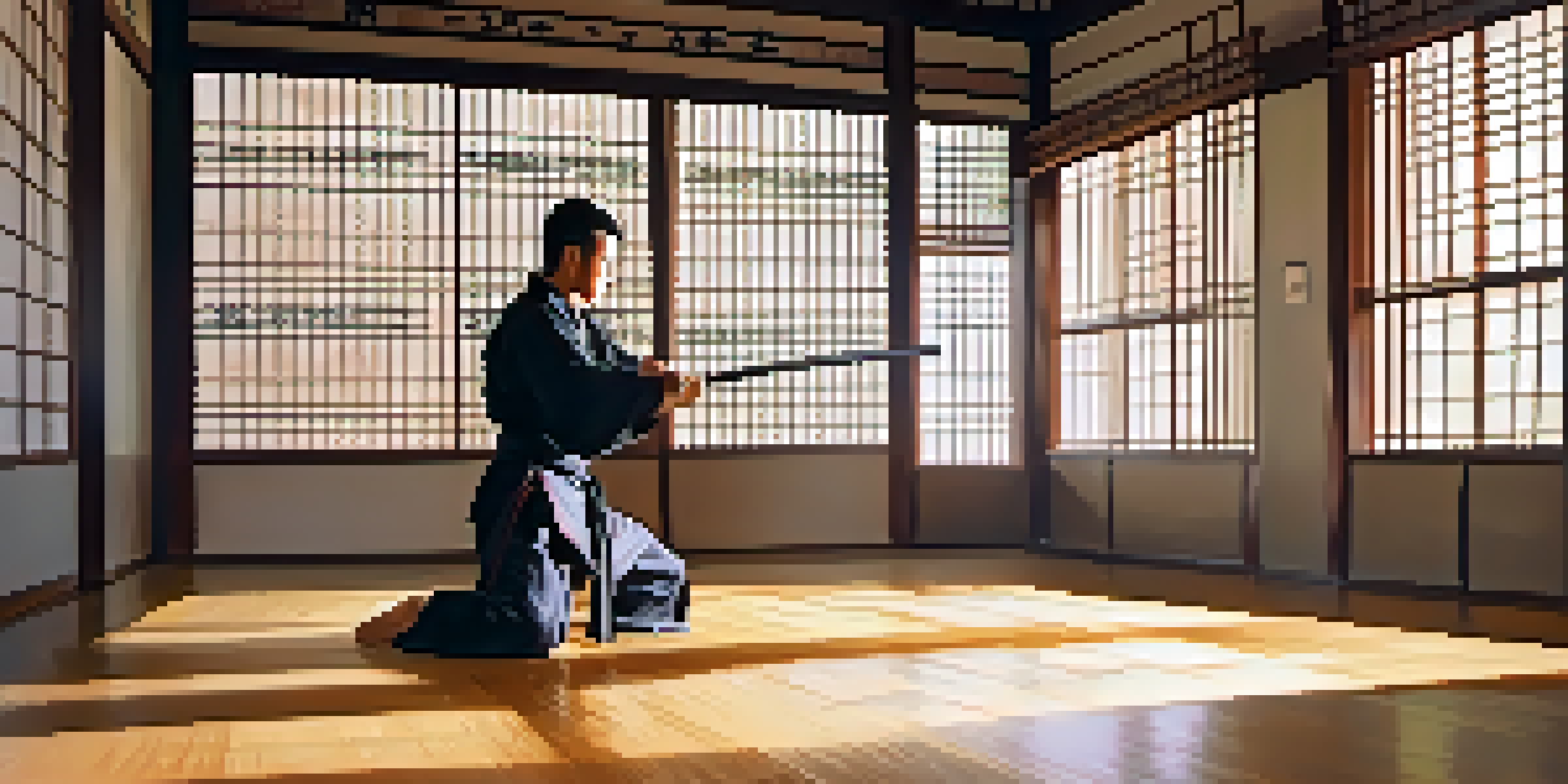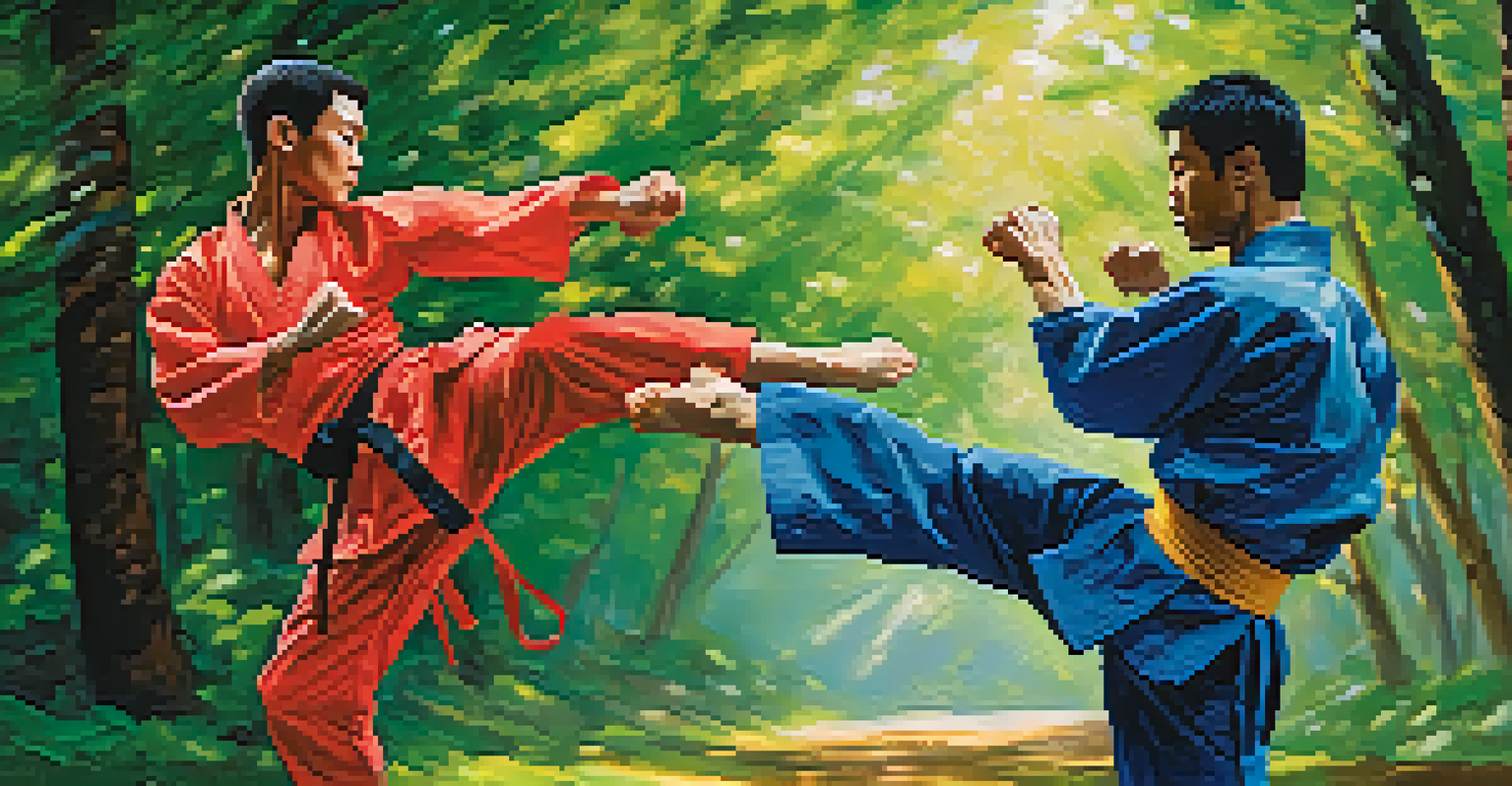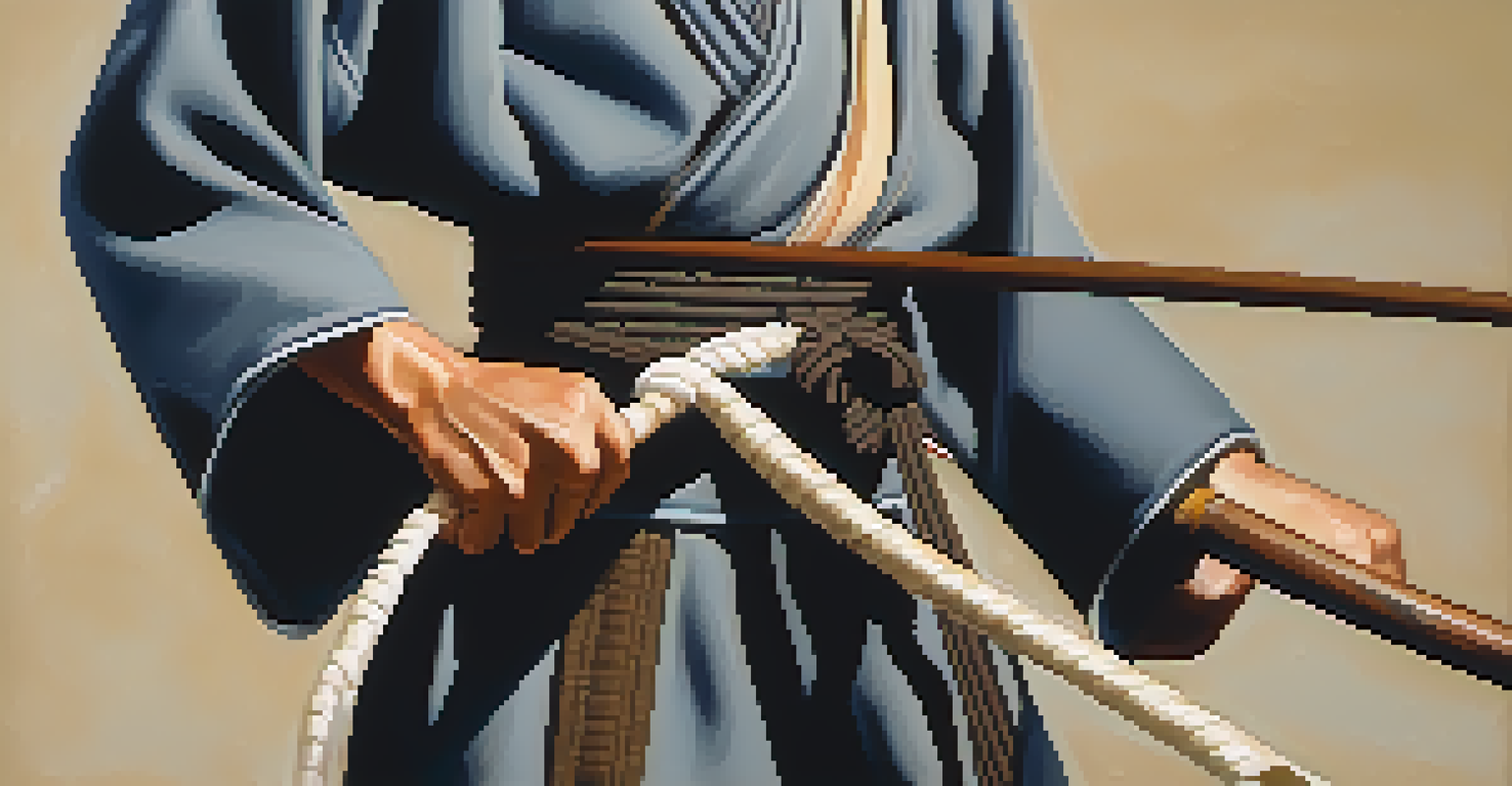The Influence of Asian Cultures on Western Martial Arts

The Roots of Martial Arts: East Meets West
Martial arts have a rich history, with roots tracing back to ancient civilizations. The earliest forms of martial arts originated in Asia, particularly China, Japan, and India, where they were developed for self-defense, military training, and spiritual growth. As these practices migrated westward, they began to blend with indigenous fighting styles, creating a unique fusion that we see today in Western martial arts.
Martial arts is not about fighting; it's about building character.
The introduction of Asian martial arts to the West can be largely credited to cultural exchanges, particularly during the 19th and 20th centuries. This period saw a growing fascination with Eastern philosophies and practices, with martial arts being one of the most captivating elements. Films and literature further popularized these arts, sparking interest among Western practitioners who sought to learn their techniques and philosophies.
As Western societies embraced these martial forms, they began adapting them to fit local customs and values. This evolution not only preserved the essence of the original practices but also allowed for creativity and innovation in their application. The result is a rich tapestry of martial arts that continues to evolve, reflecting the dynamic interplay between Eastern and Western cultures.
Key Asian Martial Arts and Their Influence
Several distinct Asian martial arts have made a significant impact on Western practices. For instance, karate, judo, and kung fu have become household names, often featured in movies and television shows. These disciplines brought with them not just physical techniques, but also philosophies that emphasize discipline, respect, and self-improvement.

In particular, karate's emphasis on striking techniques and kata—pre-arranged forms—has been integrated into various Western martial arts schools. Judo, with its focus on leverage and throws, has influenced many grappling arts, while kung fu has introduced fluid movements and acrobatics, inspiring both practitioners and choreographers alike. Each of these arts contributes a unique flavor to the martial landscape.
Martial Arts: A Cultural Fusion
Martial arts originated in Asia and evolved through cultural exchanges, blending with Western practices to create a unique fusion.
Moreover, the popularity of Asian martial arts has led to the establishment of mixed martial arts (MMA), a sport that combines techniques from various martial disciplines. This melding showcases the adaptability of martial arts and reflects the ongoing dialogue between Eastern and Western fighting philosophies, demonstrating that the influence is both deep and far-reaching.
Philosophical Underpinnings of Martial Arts
One of the most profound influences of Asian cultures on Western martial arts is the incorporation of philosophical teachings. Concepts such as mindfulness, respect for opponents, and the pursuit of personal mastery are rooted in Eastern philosophies like Buddhism and Confucianism. These principles have transformed martial arts into more than just a means of physical combat; they have become a path to personal growth.
The ultimate aim of martial arts is not having to use them.
For example, the practice of meditation in martial arts helps practitioners develop focus and mental clarity, which are essential for both training and competition. This focus on the mind-body connection is often less emphasized in traditional Western combat sports, making the inclusion of such practices a significant development in martial training. As students learn to control their minds, they often find that their physical skills improve as well.
Incorporating these philosophical elements has led to a more holistic approach to martial arts in the West. Schools often teach students about the importance of ethics, humility, and perseverance, helping them to become not just skilled fighters, but also well-rounded individuals. This integration showcases the lasting impact of Asian philosophies on Western martial practices.
Cultural Exchange Through Film and Media
The influence of Asian martial arts on the West has been significantly amplified by film and media. Iconic martial arts films featuring stars like Bruce Lee, Jackie Chan, and Jet Li brought Asian fighting styles into the global spotlight, capturing the imaginations of audiences worldwide. These films not only showcased stunning martial arts choreography but also highlighted the rich cultural heritage behind each discipline.
As a result, Western filmmakers began to incorporate these techniques into their action films, creating a new genre that mixed Eastern martial arts with Western storytelling. This cultural exchange has helped to demystify martial arts for Western audiences, making it more accessible and appealing. Such films have inspired many to take up martial arts training themselves, leading to a surge in enrollment in martial arts schools.
Philosophy Enhances Training
The integration of Eastern philosophical teachings into Western martial arts promotes personal growth and mental clarity alongside physical skills.
Additionally, the portrayal of martial arts in media has evolved, often emphasizing the philosophical aspects alongside physical prowess. This shift helps to educate viewers about the deeper meanings and traditions behind these practices, fostering a greater appreciation for Asian cultures. Thus, film and media have played a crucial role in bridging cultural gaps and facilitating ongoing dialogue between East and West.
Western Adaptations of Asian Martial Arts Techniques
As Asian martial arts became more integrated into Western culture, practitioners began to adapt techniques to suit their own needs and environments. This has led to the development of hybrid martial arts systems, such as Brazilian Jiu-Jitsu, which blends Japanese jujutsu with local grappling techniques. These adaptations showcase the creativity and innovation that arise when different martial traditions intersect.
Moreover, the rise of fitness culture has prompted many to adopt Asian martial arts for their health benefits. Disciplines like tai chi and kickboxing have gained popularity not just for self-defense but also for improving physical fitness, flexibility, and mental well-being. This trend exemplifies how martial arts can be reinterpreted to fit contemporary lifestyles while still honoring their original roots.
These adaptations demonstrate that martial arts are not static; they evolve with the times and respond to the needs of their practitioners. As Western martial artists continue to explore and integrate Asian techniques, the dialogue between these diverse traditions will only deepen, enriching the martial arts community as a whole.
The Role of Competitions and Tournaments
Competitions and tournaments have played a vital role in popularizing Asian martial arts in the West. Events such as karate championships and judo competitions not only showcase the skills of athletes but also foster camaraderie and respect among practitioners from different backgrounds. These gatherings create opportunities for cultural exchange, as martial artists share techniques, philosophies, and experiences.
In recent years, the emergence of MMA competitions has further blurred the lines between Eastern and Western martial arts. Fighters trained in various disciplines, including muay Thai, Brazilian Jiu-Jitsu, and wrestling, face off against one another, demonstrating the effectiveness of diverse techniques in a competitive setting. This has led to increased interest in cross-training, with many practitioners eager to learn from multiple martial arts traditions.
Media Boosts Martial Arts Popularity
Films and media have played a crucial role in popularizing Asian martial arts in the West, making them more accessible and fostering cultural appreciation.
These competitions also serve as a platform for promoting the values inherent in martial arts, such as discipline, sportsmanship, and respect for opponents. As martial artists from various backgrounds come together, they contribute to a sense of unity and shared purpose, highlighting the powerful connections formed through the practice of martial arts across cultures.
Future Trends: The Continuing Influence of Asian Martial Arts
As we look to the future, the influence of Asian cultures on Western martial arts shows no signs of waning. With increasing globalization, practitioners are more connected than ever, allowing for the rapid exchange of techniques and philosophies. This interconnectedness fosters a vibrant community where martial artists can learn from one another, regardless of geographical boundaries.
Additionally, the rise of social media has enabled martial artists to share their knowledge and experiences with a global audience. Online tutorials, virtual seminars, and social media challenges create new opportunities for learning and collaboration, bridging gaps that were once defined by distance. This digital landscape allows for the continuous evolution of martial arts, ensuring that the fusion of Eastern and Western styles remains dynamic.

Ultimately, the future of martial arts will likely be characterized by a blend of tradition and innovation. As practitioners continue to honor their roots while exploring new possibilities, the dialogue between Asian and Western martial arts will thrive, enriching the experience for all involved. This ongoing journey promises to keep martial arts relevant and exciting for generations to come.